Another Look
Friday, December 23rd, 2005“What is a course of history or philosophy or poetry no matter how well selected…compared to the discipline of looking always at what is to be seen,” says Thoreau. (Walden p. 105) I tried to exercise some of that discipline this morning. Instead of going Christmas shopping I returned to the raceme of pink-flowered currant that I had looked at earlier in the week, now again illuminated by a horizon-hugging sun.
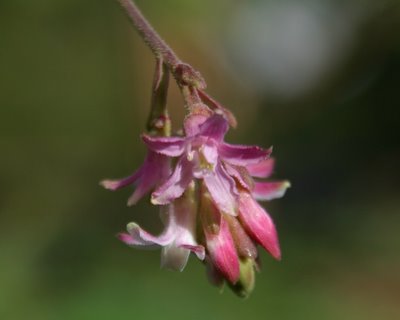
I noticed that the five petals of each blossom split into two layers, a longer outside one arching back and curling at its edges, and a shorter inside one that remained erect. The splaying outside layers gave the blossom its star shape. The inside layers combined into an open tube surrounding its golden pistil and stamens. I also noticed some changes since the last look:
 seven of the blossoms were open instead of four. Five pink closed blossoms cupped a cluster of immature green buds at the raceme’s tip. As each blossom opened, it diverged from the central axis on its own outward stretching stem. The higher on the raceme, the more mature the blossom and the the more shrunken and curled the sepal which had enclosed it as a bud.
seven of the blossoms were open instead of four. Five pink closed blossoms cupped a cluster of immature green buds at the raceme’s tip. As each blossom opened, it diverged from the central axis on its own outward stretching stem. The higher on the raceme, the more mature the blossom and the the more shrunken and curled the sepal which had enclosed it as a bud.
My revisited raceme seemed to be the oldest one on the shrub, its location best placed to gather the sparse sunlight and attract me with my camera. On other twigs I found younger growing tips. They revealed that flowers and leaves are originally enclosed in a single germinal container springing from the battered remnants of last year’s growth.
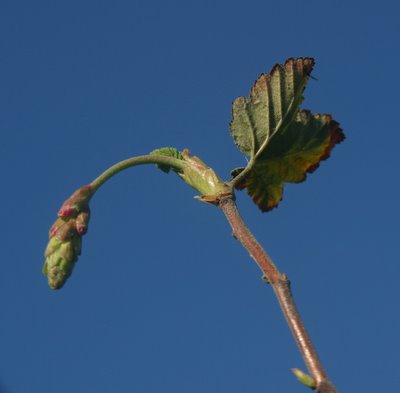
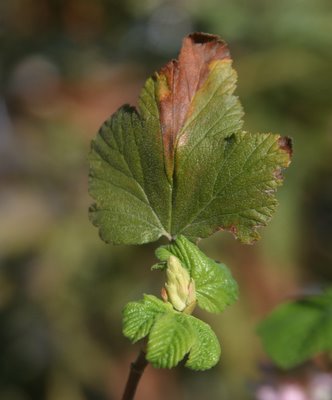 The subtle fragrance of Ribes sanguineum glutinosum, more leathery than sweet, occasionally wafted past but dissipated before I could satisfy my hungry nostrils. I wanted to be smaller, faster and more sensitive–like the bug that buzzed by me and dove into one of the blossoms. Then I understood that they had evolved to entice it into spreading their red and sticky seed.
The subtle fragrance of Ribes sanguineum glutinosum, more leathery than sweet, occasionally wafted past but dissipated before I could satisfy my hungry nostrils. I wanted to be smaller, faster and more sensitive–like the bug that buzzed by me and dove into one of the blossoms. Then I understood that they had evolved to entice it into spreading their red and sticky seed.
 I’ve often discussed with students the lines of Wordsworth’s “The Tables Turned” that inspired Thoreau’s preference of Nature over Culture:
I’ve often discussed with students the lines of Wordsworth’s “The Tables Turned” that inspired Thoreau’s preference of Nature over Culture:
Come forth into the light of things
Let Nature be your teacher.
…
Enough of Science and of Art
Close up those barren leaves
Come forth and bring with you a heart
That watches and receives.
I’m still trying to figure out how to do that. Returning to the same flower after a few days and noticing some changes, spending enough time to really look at it and allow the bugs to show up, taking as long as I need to find the right words–that’s a start.
On the way to the back door to clean the mud off my shoes, I noticed a patch of sunlight on the wall of my excavation.
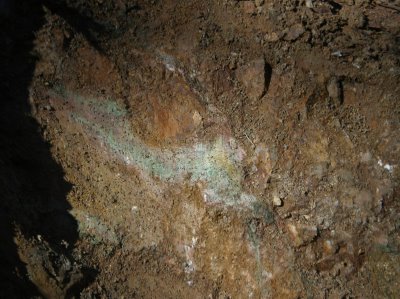
While digging I find the life of the seasons in the mineral as well as in the vegetable and animal. A few weeks ago, this same ground broke the tip off the steel pickaxe. Now my spade sinks into the damp earth like a scoop into ice cream.


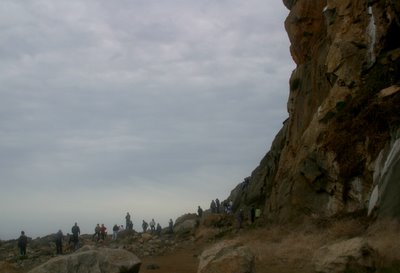



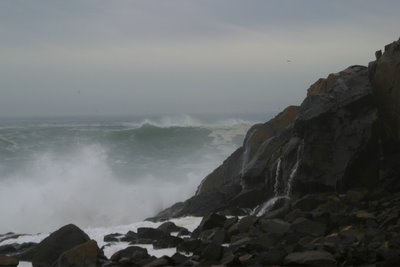


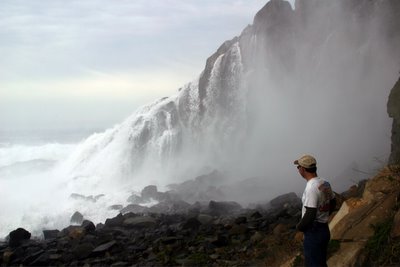
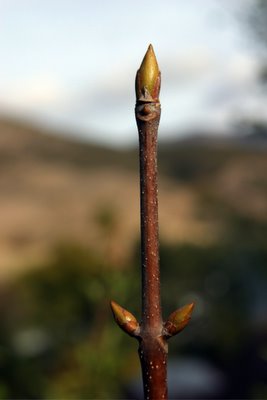

 This is ribes sanguineum glutinosum, or pink flowered currant. The specimen between the neighbors’ towering second story and our roof has grown 10 feet, as fast and as tall as the Redwood next to it. Another in total shade under the fence, which I planted to replace a vigorous non-native tree I cut down, has only reached two feet, but is also showing new leaves. The two in back, on the steep north facing slope where there’s very little soil, have reached about four feet. Bert says “This Ribes is more drought tolerant than most of the drought resistant plants of the trade, but in a native garden plant towards the wettest section… .”
This is ribes sanguineum glutinosum, or pink flowered currant. The specimen between the neighbors’ towering second story and our roof has grown 10 feet, as fast and as tall as the Redwood next to it. Another in total shade under the fence, which I planted to replace a vigorous non-native tree I cut down, has only reached two feet, but is also showing new leaves. The two in back, on the steep north facing slope where there’s very little soil, have reached about four feet. Bert says “This Ribes is more drought tolerant than most of the drought resistant plants of the trade, but in a native garden plant towards the wettest section… .”















